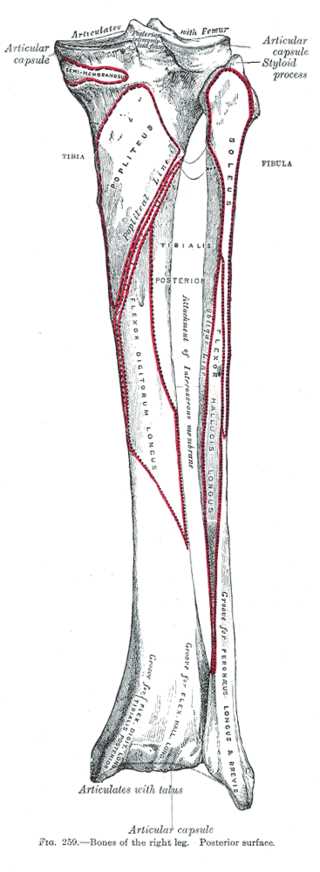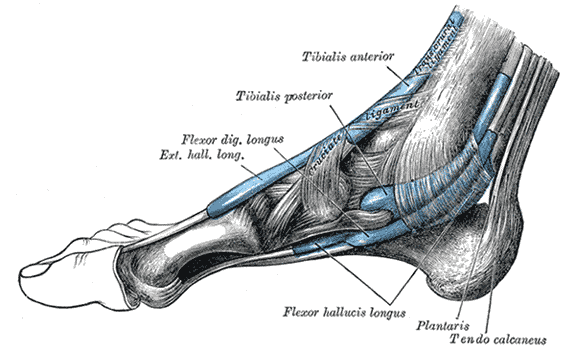[1]
Edama M, Kubo M, Onishi H, Takabayashi T, Yokoyama E, Inai T, Watanabe H, Nashimoto S, Kageyama I. Anatomical study of toe flexion by flexor hallucis longus. Annals of anatomy = Anatomischer Anzeiger : official organ of the Anatomische Gesellschaft. 2016 Mar:204():80-5. doi: 10.1016/j.aanat.2015.11.008. Epub 2015 Dec 15
[PubMed PMID: 26704354]
[2]
Mostafa E, Graefe SB, Varacallo M. Anatomy, Bony Pelvis and Lower Limb: Leg Posterior Compartment. StatPearls. 2023 Jan:():
[PubMed PMID: 30726025]
[3]
Sassu P, Acland RD, Salgado CJ, Mardini S, Ozyurekoglu T. Anatomy and vascularization of the flexor hallucis longus muscle and its implication in free fibula flap transfer: an anatomical study. Annals of plastic surgery. 2010 Feb:64(2):233-7. doi: 10.1097/SAP.0b013e3181a2c772. Epub
[PubMed PMID: 20098112]
[4]
Vega J, Redó D, Savín G, Malagelada F, Dalmau-Pastor M. Anatomical variations of flexor hallucis longus tendon increase safety in hindfoot endoscopy. Knee surgery, sports traumatology, arthroscopy : official journal of the ESSKA. 2017 Jun:25(6):1929-1935. doi: 10.1007/s00167-017-4465-2. Epub 2017 Feb 20
[PubMed PMID: 28220191]
[5]
Plaass C, Abuharbid G, Waizy H, Ochs M, Stukenborg-Colsman C, Schmiedl A. Anatomical variations of the flexor hallucis longus and flexor digitorum longus in the chiasma plantare. Foot & ankle international. 2013 Nov:34(11):1580-7. doi: 10.1177/1071100713494780. Epub 2013 Jun 20
[PubMed PMID: 23788233]
[6]
Lemme NJ, Li NY, DeFroda SF, Kleiner J, Owens BD. Epidemiology of Achilles Tendon Ruptures in the United States: Athletic and Nonathletic Injuries From 2012 to 2016. Orthopaedic journal of sports medicine. 2018 Nov:6(11):2325967118808238. doi: 10.1177/2325967118808238. Epub 2018 Nov 26
[PubMed PMID: 30505872]
[7]
Thermann H. [Achilles tendon rupture-Part 1: etiology and diagnostics]. Der Chirurg; Zeitschrift fur alle Gebiete der operativen Medizen. 2019 Oct:90(10):863-872. doi: 10.1007/s00104-019-01024-6. Epub
[PubMed PMID: 31531684]
[8]
Abubeih H, Khaled M, Saleh WR, Said GZ. Flexor hallucis longus transfer clinical outcome through a single incision for chronic Achilles tendon rupture. International orthopaedics. 2018 Nov:42(11):2699-2704. doi: 10.1007/s00264-018-3976-x. Epub 2018 May 12
[PubMed PMID: 29754186]
Level 2 (mid-level) evidence
[9]
Lee J, Williams C, Lowrey C, Gould G, Markert R, Laughlin R. Flexor Hallucis Longus Tendon Transfer Fixation. Foot & ankle specialist. 2017 Feb:10(1):31-36. doi: 10.1177/1938640016666917. Epub 2016 Sep 20
[PubMed PMID: 27604514]
[10]
Vosseller JT, Dennis ER, Bronner S. Ankle Injuries in Dancers. The Journal of the American Academy of Orthopaedic Surgeons. 2019 Aug 15:27(16):582-589. doi: 10.5435/JAAOS-D-18-00596. Epub
[PubMed PMID: 30789380]
[11]
Anderson MR, Bell DE, Ketz JP. Flexor Hallucis Longus Muscle and Tendon Transfer for the Treatment of Achilles Tendon Wounds. Foot & ankle international. 2018 Feb:39(2):205-209. doi: 10.1177/1071100717739395. Epub 2017 Nov 24
[PubMed PMID: 29171303]
[12]
Martinez-Salazar EL, Vicentini JRT, Johnson AH, Torriani M. Hallux saltans due to stenosing tenosynovitis of flexor hallucis longus: dynamic sonography and arthroscopic findings. Skeletal radiology. 2018 May:47(5):747-750. doi: 10.1007/s00256-017-2853-9. Epub 2017 Dec 28
[PubMed PMID: 29285554]
[13]
Rodriguez-Collell JR, Mifsut-Miedes D. Checkrein Deformity of the Hallux and Second Toe after Soft-Tissue Injury. Case reports in orthopedics. 2021:2021():8459586. doi: 10.1155/2021/8459586. Epub 2021 Jan 26
[PubMed PMID: 33575050]
Level 3 (low-level) evidence



